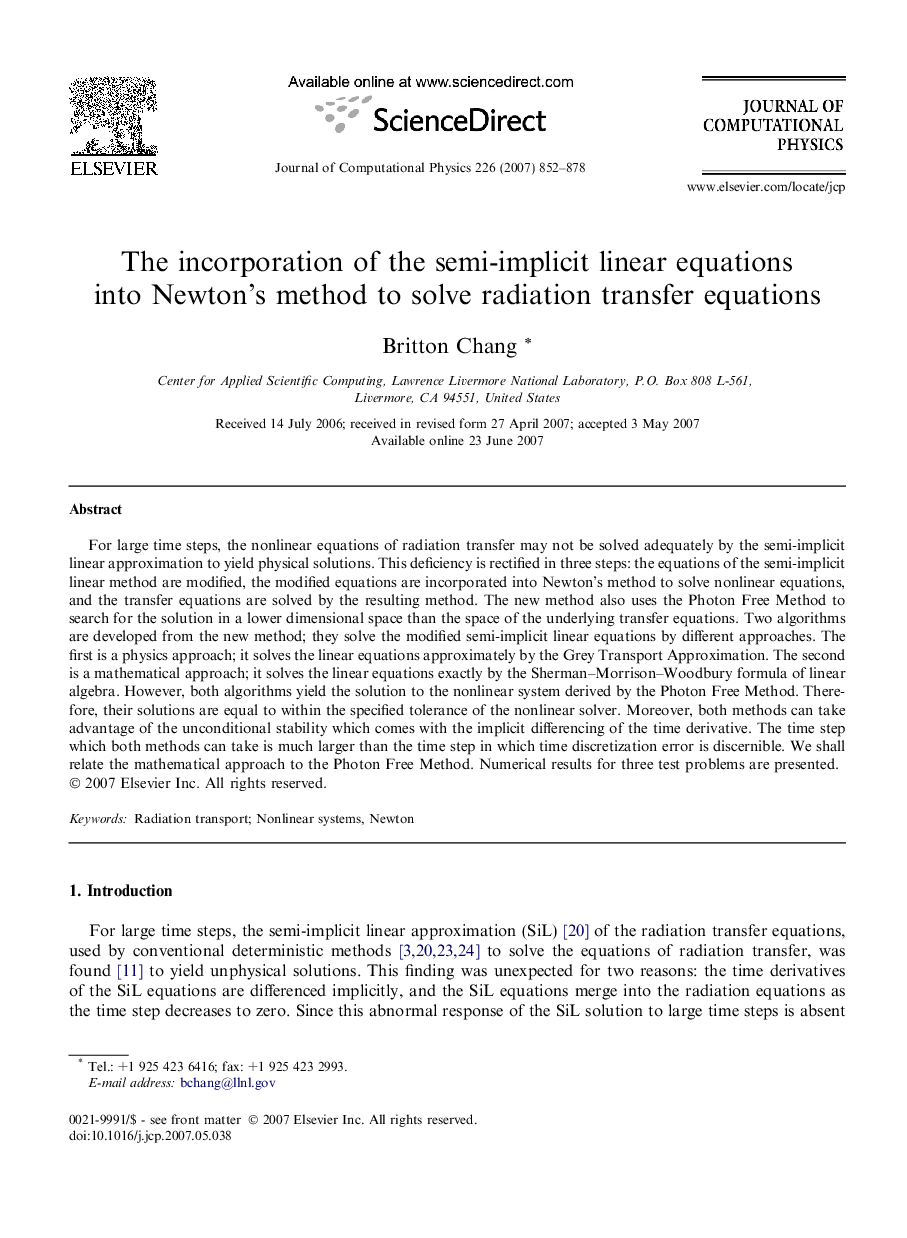| Article ID | Journal | Published Year | Pages | File Type |
|---|---|---|---|---|
| 522469 | Journal of Computational Physics | 2007 | 27 Pages |
For large time steps, the nonlinear equations of radiation transfer may not be solved adequately by the semi-implicit linear approximation to yield physical solutions. This deficiency is rectified in three steps: the equations of the semi-implicit linear method are modified, the modified equations are incorporated into Newton’s method to solve nonlinear equations, and the transfer equations are solved by the resulting method. The new method also uses the Photon Free Method to search for the solution in a lower dimensional space than the space of the underlying transfer equations. Two algorithms are developed from the new method; they solve the modified semi-implicit linear equations by different approaches. The first is a physics approach; it solves the linear equations approximately by the Grey Transport Approximation. The second is a mathematical approach; it solves the linear equations exactly by the Sherman–Morrison–Woodbury formula of linear algebra. However, both algorithms yield the solution to the nonlinear system derived by the Photon Free Method. Therefore, their solutions are equal to within the specified tolerance of the nonlinear solver. Moreover, both methods can take advantage of the unconditional stability which comes with the implicit differencing of the time derivative. The time step which both methods can take is much larger than the time step in which time discretization error is discernible. We shall relate the mathematical approach to the Photon Free Method. Numerical results for three test problems are presented.
